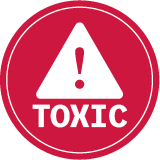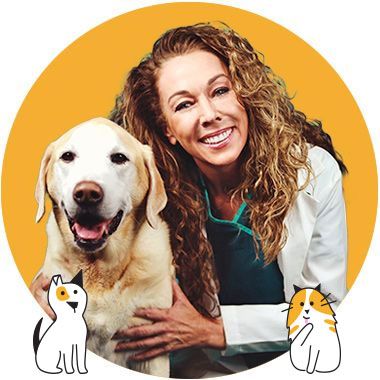Safe Play Starts with Clean Toys
Did you know your dog's toys can be one of the germiest items in your home? Learn how to clean them safely and maintain a healthy playtime environment.

STORY AT-A-GLANCE
- Dirty dog toys can harbor bacteria, mold, and allergens, putting your pet and family at risk if not cleaned regularly
- Knowing when to toss toys is crucial. Damaged, frayed, or smelly toys may pose choking hazards or carry hidden germs
- Cleaning methods differ by toy type. Rubber, rope, plush, and treat-dispensing toys all need special care to stay safe
- Natural cleaning options, such as vinegar, baking soda, and boiling water, are safe, effective, and pet-friendly alternatives to harsh chemicals
- Regular inspection, proper storage, and washing new toys before use keep your dog's playthings safe, extending their life and protecting their health
When you think about your dog's favorite toy, chances are it's not just a plaything; it's a trusted companion. Whether it's a squeaky plush, a rubber ball, or a knotted rope, your dog likely carries it everywhere. Unfortunately, with all that chewing, slobbering, dragging, and tossing, those toys can collect dirt, bacteria, and even mold.
You might not notice it right away, but dirty toys can become one of the germiest items in your home. In fact, studies have found that dog toys can harbor yeast, mold, and harmful bacteria like staph — ranking them in the top 10 dirtiest household objects.1 Since your dog puts these toys directly in their mouth, it's easy for germs to spread. If your dog loves giving kisses, those germs can even transfer to you.
The good news? With a bit of regular cleaning, you can keep your dog's toys safe, extend their lifespan, and protect your dog's health.
The Hidden Dangers of Dirty Dog Toys
Your dog's toys go through a lot. They're chewed, licked, tossed into the yard, left in the rain, or buried under couch cushions. All of this exposure means they can quickly become breeding grounds for bacteria, mold, and other pathogens. Some of the most common issues include:2,3
- Bacteria buildup — Toys not cleaned frequently can harbor harmful germs that may cause stomach upset or infections in dogs.
- Mold and yeast growth — Damp or slobbery toys, especially plush and rope ones, can trap moisture. Over time, this leads to mold inside the fibers.
- Allergen exposure — Dust, pollen, and even chemicals from outside can stick to toys, which your dog may then ingest.
- Risk to humans — If your pup is a cuddler or licker, bacteria from toys can end up on your skin, furniture, or even in your mouth.
In short, a dirty toy isn't just a smelly nuisance; it can be a real health risk. That's why cleaning toys regularly is just as important as brushing your dog's coat, trimming their nails, or keeping their food bowls clean.
Knowing When to Clean and When to Toss
Not every toy can be saved, no matter how much your dog loves it. Sometimes, it's better to throw a toy away than to risk an injury or illness. Here are signs it's time to toss a toy:4,5
- Some pieces are missing or chewed off
- Stuffing or squeakers are poking out
- The fabric or rubber is tearing, creating sharp edges
- Rope toys are frayed and tangled beyond repair
- Toys smell bad even after a wash
Remember — A new toy will always cost less than an emergency vet visit. As much as your dog may love a ragged toy, safety has to come first.
How Often Should You Clean Dog Toys?
The frequency of cleaning depends on how often your dog plays with a toy. For example, daily-use favorites, like a beloved plush or chew toy, should be cleaned weekly. Meanwhile, outdoor toys that get dragged through dirt or grass may need rinsing after every play session. If you use a system where some toys are in play while others are stored, you can leave cleaning every two to three weeks.
A helpful routine is to divide toys into two groups and rotate them. Wash one set during the first and third weeks of the month, and the other set during the second and fourth weeks. This way, your dog always has clean toys available.
Safe Cleaning Methods by Toy Type
Not all toys are created equal, and cleaning methods vary based on material. Using the wrong approach can damage a toy — or worse, leave harmful chemicals behind. Here's a breakdown of the safest cleaning methods for each type of toy:6,7
- Rubber, plastic, and nylon toys — These durable toys, such as balls and chew sticks, can withstand tougher cleaning.
- Dishwasher — Many rubber and hard plastic toys are dishwasher safe for the top rack. Skip detergent unless the manufacturer approves it; hot water alone often does the job.
- Hand wash — Use warm water and mild dish soap. Scrub crevices with a brush, rinse thoroughly, and let the toy air-dry.
- Check for water inside — Some toys can trap water. Make sure they're fully drained before giving them back to your pup.
- Rope toys — These are fun for tug-of-war but tricky to clean because fibers hold saliva and dirt.
- Microwave method — Soak the rope in clean water, then microwave it on high for about a minute to kill bacteria. Let it cool completely before letting your pet play with it again.
- Washing machine — Place the rope toy in a laundry bag and run it through a hot wash with no detergent. Allow it to dry completely, preferably in the sun.
- Boiling water — For extra sanitation, soak rope toys in boiling water with a splash of white vinegar.
- Plush and fabric toys — These soft toys are often your dog's comfort items, but they're also germ magnets.
- Washing machine — Most plush toys can go in the washer. Use a gentle cycle with hot water and either a dog-safe detergent or a natural mix of baking soda and vinegar.
- Drying — Air-dry in the sun when possible. If you use a dryer, skip dryer sheets (they can leave harmful residues).
- Squeaky toys — Place them inside a laundry bag to protect the squeaker during washing. Use a cool wash to prevent damage.
- Treat dispensers (like Kong products) — These toys can get especially messy with leftover food. Hard varieties can typically go on the top rack of your dishwasher. Always remove leftover food or peanut butter before running them through. Alternatively, you can hand-wash these toys using hot water, mild soap, and a bottle brush to scrub the inside.
- Wood, bone, or antler toys — These materials are porous and can't be effectively sanitized. If they become dirty or splintered, it's best to throw them away.
Cleaning toys doesn't have to feel like a chore. Just as you wash food bowls or vacuum fur off the couch, make toy cleaning part of your pet-care routine.
DIY Natural Cleaning Solutions
If you'd rather avoid commercial cleaners, there are safe, effective options you can make at home. These methods are not only safer for your dog but also environmentally friendly and budget-conscious:
- Vinegar solution — Mix equal parts white vinegar and water. Soak toys for 30 minutes, then rinse well.
- Baking soda — Add a spoonful of baking soda to the washer for plush toys to help neutralize odors.
- Boiling water — This works great for rope toys or rubber chews. A few minutes in boiling water kills most bacteria.
When Illness Is a Concern — Extra Precautions
If your dog has been sick — or if you've had visitors with dogs — it's wise to sanitize toys more thoroughly. Certain viruses, such as parvovirus, can survive for months on various surfaces.
- Bleach solution (for hard toys only) — Use one part bleach to 30 parts water (about half a cup per gallon). Soak for 10 minutes, rinse thoroughly, and air-dry.
- Do not use bleach on porous materials, such as plush or rope. It's nearly impossible to rinse out thoroughly, and leftover chemicals could harm your dog.
In cases of severe illness, sometimes it's safest to throw away old toys and start fresh.
Toy Maintenance Tips Beyond Cleaning
Keeping toys safe isn't just about washing them. Regular inspection and smart storage also make a big difference.
- Inspect often — Look for loose stitching, missing chunks, or sharp edges.
- Store smart — Keep toys in a clean basket, and don't forget to wash the basket itself periodically.
- Avoid outdoor exposure — Sun and rain can damage toys, making them brittle, faded, or moldy. Store toys indoors when not in use.
- Wash new toys — Before letting your dog play, wash new toys to remove dust, factory treatments, or anything picked up during shipping.
Clean Toys, Happy Dog
Your dog's toys bring joy, exercise, and comfort, but they can also bring hidden health risks if left unwashed. Regular cleaning protects not only your dog but also your household from germs. Whether it's tossing a plush toy in the washer, microwaving a rope tug, or scrubbing down a rubber chew, these simple steps make a big difference.
Safe play starts with clean toys. By keeping up with toy hygiene, you'll extend the life of your dog's favorite playthings, save money in the long run, and most importantly, give your pup a healthier, happier playtime.










